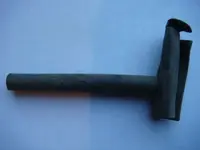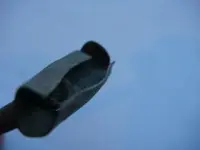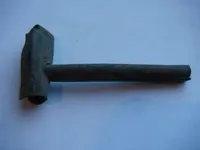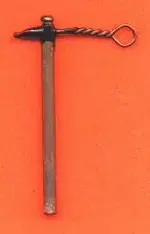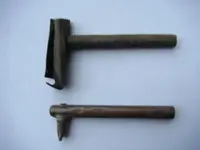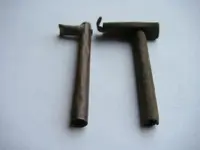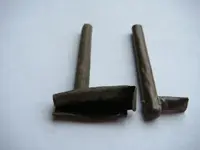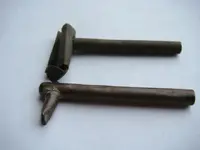Sorry...here is what a friction primer is:
Friction Primers
The age of the linstock and quill had not quite ended by the time of the Civil War - Gibbon gives detailed instructions for the manufacture and use of slow-match, quills, and even portfires. However, this cumbersome method of firing had been superseded by the remarkably effective friction primer. The primer consists of a brass tube, open at one end. At the closed end, a small hole of about the same diameter of the tube is drilled to one side, and short length of similar tubing is inserted and soldered into place. Opposite this short length of tubing is a hole to receive the priming wire, which is a length of brass wire with a flattened and serrated end. The short tube is lined with a friction powder similar in composition to the head of a friction match, and the priming wire is inserted through the head of the primer and into the short tube, which is then crimped to hold the end of the serrated wire in place. The long end of the priming wire is twisted into a loop.
The head of the primer is then sealed with shellac, and when dry the main body of the primer is filled with musket powder, the open end being sealed with wax. The resulting product is effectively waterproof, which is one of the signal advantages of the friction primer over the linstock. In use, the primer is simply placed in the vent hole of the piece, with the lanyard hooked to the loop of wire at its head. When the lanyard is pulled, the serrated end of the priming wire ignites the friction composition, which in turn sets off the musket powder in the body of the primer, which flashes down the vent to set off the main charge. The effect is almost instantaneous. For more information about the manufacturer of primers, see Craig Joksch's Primers page.
Before the introduction of the friction primer, many pieces were equipped with a lock mechanism to use percussion caps, similar to those used to fire muskets.

